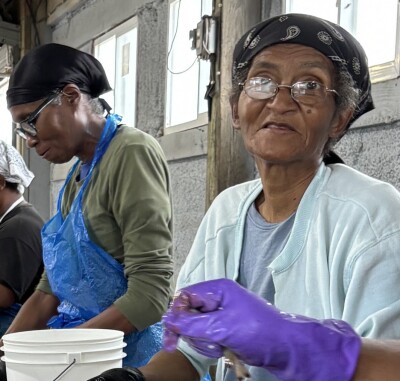Island out of time
Tangier, Va., watermen share a storied past and an uncertain future
By Kathy Bergren Smith
Most of the 550 people who live on Virginia's Tangier Island share one of a few last names and have family roots stretching back at least a century. Their thick brogue is commonly called Elizabethan, but it is more likely a remnant of the Cornish roots of the island's settlers.
Fifteen miles from the mainland, Tangier spr eads across a cluster of marshy islands close to the center of the Chesapeake Bay. Its nearest neighbors are the Smith Islanders, just to the north over the Maryland border.
Tangier truly is a place out of time. Spanky's bills itself as a "state of the art" 1950's ice cream parlor. No alcohol is sold on the island. On Sunday, the town's two churches are filled and services last most of the day. Tangier's economy has been based upon the seafood industry since the days of the pungy schooner, when Tangiermen, as they are known, sailed cargoes of oysters across the bay and up the Potomac to the docks of Washington, D.C., during brutal winter weather.
The islanders' vast knowledge of the Chesapeake and dogged work ethic long ago earned them a reputation as some of the best watermen on the bay. There is no other industry on Tangier, and as sweeping new regulations aimed at protecting the imperiled blue crab take effect, more islanders are contemplating jobs away from home. Those who remain are wondering if they can protect their livelihood and their centuries-old way of life.
"Tangier is facing a challenging time right now," says James "Ooker" Eskridge, a full-time waterman who is also mayor of Tangier.






